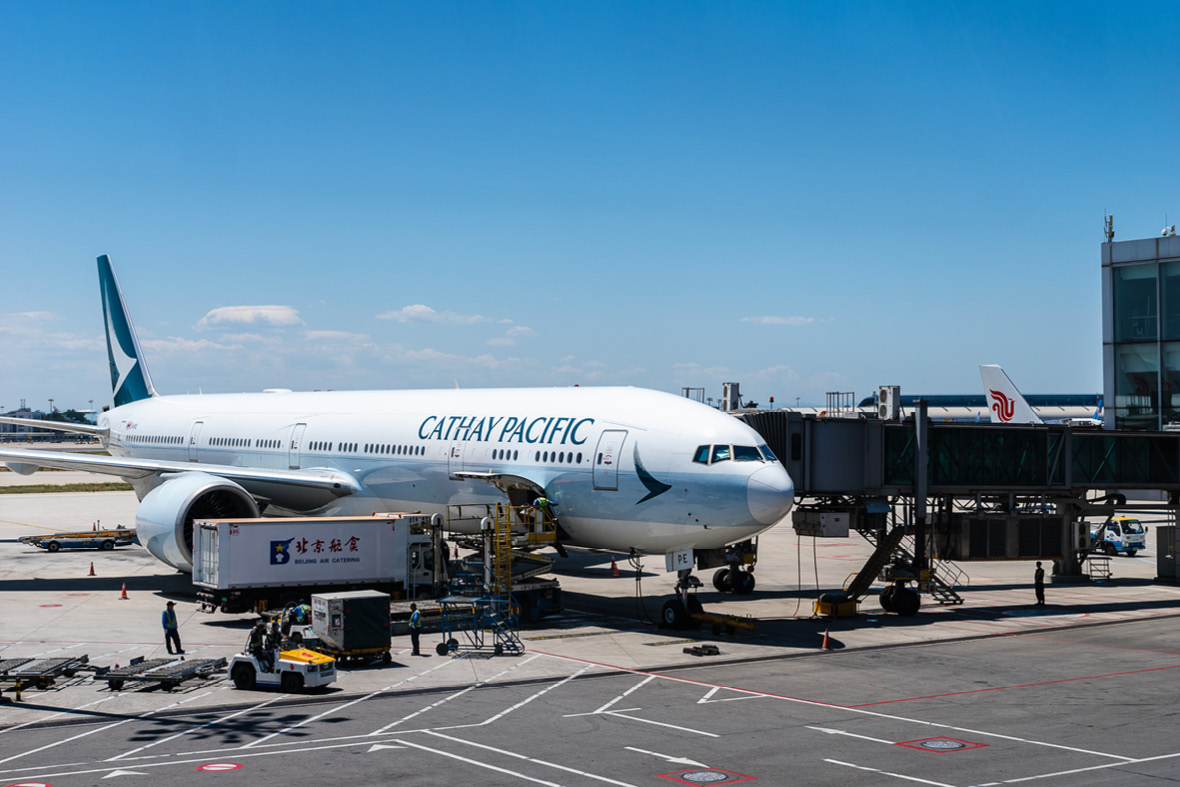Cathay Pacific’s post-Covid recovery is in full swing, with new routes and aircraft deliveries forming part of the airline’s strategy to get back on track to pre-pandemic growth. William Hallowell reports
Boasting revenue of HK$94 billion (US$12 billion) for the 2023 financial year, Cathay Pacific Airways indicates its business is booming post-Covid.
Recording an 85.1% revenue increase on 2022, Hong Kong’s largest airline told ARGS it remains “confident” about the prospect of growth in the Asia Pacific region. Indeed, “Asia-Pacific should continue to be a front-runner when compared to other regions,” claimed Andy Wong, General Manager of Corporate Affairs at Cathay Pacific.
“Since the pandemic, we are seeing a strong rebound in traffic and we maintain a positive outlook for traffic growth in the next few years, connecting Hong Kong, the rest of the Greater Bay Area, and the Chinese Mainland with the world,” said Wong.
Commenting on Cathay’s annual results, Chair Patrick Healy said: “2023 was our first profitable year since 2019. The year was characterised by a notable surge in travel demand following three years of pandemic-related restrictions. This imbalance between supply and demand resulted in high yields and contributed to a strong financial performance in both halves of the year.”
“We will reach 80% of our pre-pandemic passenger flights within the second quarter of 2024,” explained Healy. “As we continue to rebuild our flights, we expect the supply and demand imbalance experienced in 2023 to diminish, and the normalisation of yields seen in recent months to continue throughout 2024.
“We acknowledge the significant challenges that persist in the global aviation industry. These include recruitment and training of customer-facing employees as well as supply chain constraints.”
The airline is continuing to rebuild its pre-pandemic network this year, having relaunched its Colombo and Chennai routes, and will be launching a summer service to Barcelona from June.
Cathay also recently announced the return of passenger flights to Riyadh after a long hiatus, having last served the Saudi Arabian capital in 2017. Wong said the airline continues to “progressively increase” its passenger flights and add more frequencies to popular destinations, including China, the US, South Asia and Japan.
Fleet development
Further, fleet expansion will play a part in Cathay’s expansion strategy, with the airline recently having purchased 32 Airbus A321neo and A320neo aircraft.
“This will bring the group’s new aircraft deliveries to more than 70,” Wong told ARGS. “These aircraft are expected to be delivered by 2029 and will join the fleets of Cathay Pacific and HK Express, principally serving destinations in the Chinese Mainland and elsewhere in Asia.”
The carrier has also placed an initial firm order with Airbus for six A350F freighters and secured the right to acquire 20 more aircraft to be delivered from 2027.
Cathay says the orders will link Hong Kong and China with long-haul destinations in North and South America, as well as in Europe. Wong explains: “Adding state-of-the-art, fuel-efficient aircraft enables us to continue growing our network and connect our customers with more flights and destinations.”
The head of corporate affairs highlights “immense opportunities” ahead for financial growth and network expansion post-Covid, given Cathay’s presence in the Greater Bay Area.
Speaking on Cathay’s global footprint today, Wong said: “The city’s borders were closed for much longer than other markets and we have prioritized trunk routes during our rebuild.
“We have resumed pre-pandemic frequencies to most of our key destinations, [for example], we have resumed operating up to five-times-daily London Heathrow and thrice-daily New York JFK flights. Our unique position is having deep roots in Hong Kong, being proudly part of China and connecting the world.
“The entire Greater Bay Area being our extended home market presents immense opportunities with a population ten times the size of Hong Kong,” said Wong. “As we continue to rebuild, we have plans to add more destinations in the Chinese Mainland and Belt and Road countries.”
Despite Hong Kong being late to open post-Covid, the construction of a third runway at Hong Kong International Airport (HKIA), under the airport authority’s Master Plan 2030, is poised to deliver growth for the region’s airline industry – and demand for greater global connectivity is there.
According to Cathay Pacific, the three-runway system means airlines will be able to have more flights and more timings, with better connection possibilities.
With the three-runway system set to be fully operational by the end of this year, a rare and exciting opportunity for growth presents itself, said Wong.
“Our role as the city’s home carrier is to be an enabler, connecting Hong Kong, the rest of the Greater Bay Area, and the Chinese Mainland with the world. We welcome competition that will benefit Hong Kong as a world-leading international aviation hub.
“With Hong Kong and the rest of the Greater Bay Area as our extended home market, we are eager to play our role by continuing to invest in the growth and development of Cathay and the Hong Kong international aviation hub.”
According to Wong, Cathay aims to fully rebuild its network within the first quarter of 2025 – and HKIA’s third runway will play a crucial role in the airline’s post-pandemic recovery.



